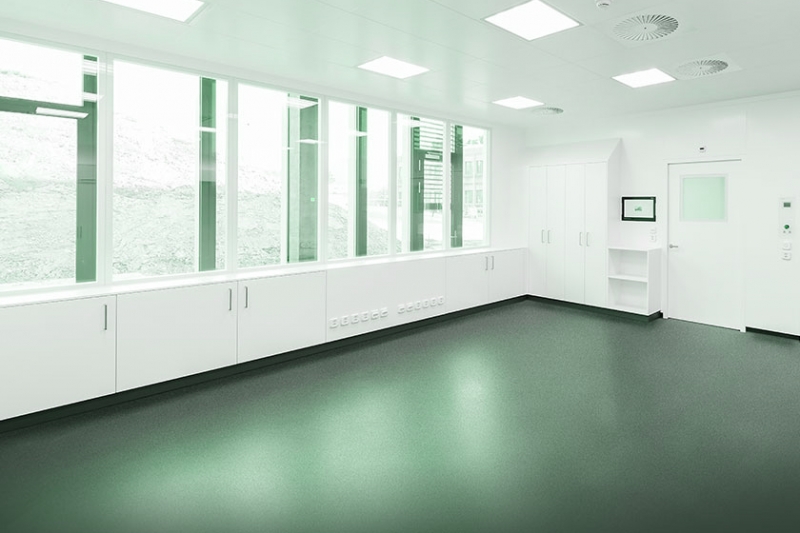Standard cleanroom access floors can`t adequately handle the weight of today`s processing tools, especially during initial move-in. The average floor load of a cleanroom is 200 lbs./ft2, but it can reach 350 lbs./ft2 in isolated spaces, depending on equipment configuration and weight, according to industry statistics. Manufacturers generally must certify their system performance under rolling loads.
The challenge for aluminum floor producers has always been how to increase the strength of our product without adding so much material that the cost becomes prohibitive. The rolling-load issue will become even more important as IC suppliers move toward 300-mm wafer production.
In pharmaceutical applications, seamless flooring–epoxy coatings that create an impervious, seamless surface–is preferred, because bacteria or particulate could become trapped in the crevices of seamed tile flooring. Industry is going towards seamless flooring, which is very resistant to chemical attack and moisture penetration.
Most vendors of cleanroom flooring offer antistatic coatings as either standard or optional features. Access floor panels and pedestals should provide a positive contact for continuous electrical grounding of the entire floor system with an electrical resistance of less than 10 ohms, according to figures cited in an industry report.
“Microbiological” flooring, which contains antimicrobial chemistry that inhibits the growth of bacteria, has also been developed. While Dycem has largely targeted the pharmaceutical and medical markets with its products, semiconductor industry is also beginning to be concerned about microbial contamination.











